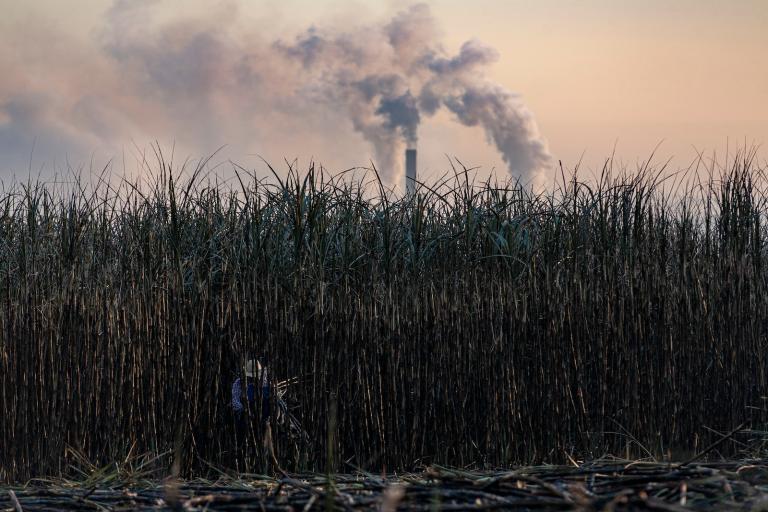Aerial view of a CAFO.Photo: Kestrel AerialWhen the Prevention of Farm Animal Cruelty Act (Proposition 2) passed in California in 2008, it granted laying hens nominally more space in their cages.
Proponents of humane animal husbandry cheered the fact that these birds would now have a little more room to stretch their wings. But industrial egg producers — claiming their costs would go up — threatened to leave the state before 2015, when key portions of the law go into effect.
Hope those disgruntled egg producers like potatoes. Perhaps sensing an opportunity, Idaho lawmakers passed a series of laws more or less inviting the poultry industry to their state. In this High Country News article (subs. req’d), Grist contributor Stephanie Ogburn tracks the state’s Confined Animal Feeding Operation (CAFO) laws and their repercussions throughout the state, and asks: Is Idaho a new haven for CAFOs?
Idaho’s dairy industry (which surpassed potato production in 1997) has already ballooned out of control: In 1991, 2,000 dairies produced 3 billion pounds of milk; now a mere 650 dairies produce 11 billion pounds of milk.
How exactly did they usher in so many changes so fast? According to Ogburn, Idaho lawmakers started out by restricting public comment on CAFOS in 2000. They followed that by altering water rights laws, passing legislation ominously nicknamed the “CAFO Secrecy Bill” (which blocked oversight of CAFO manure-management plans by making them “proprietary”), and amending the state’s Right to Farm law to prohibit local governments from regulating agricultural facilities as nuisances. The latter also barred neighbors from filing complaints using the nuisance law.
The result, according to this Boise Weekly article from 2010, is a long stretch of CAFOs along the Bob Barton Highway in Idaho’s Magic Valley. It’s since earned the nicknamed “Excrement Alley” from the advocacy group Idaho Concerned Area Residents for the Environment (ICARE). Here’s why:
As we drive by a dairy CAFO, a 4-foot curving berm of cow shit follows along the fence line. Inside are pools of water with a glassy green-brown surface. Liquid shit. Jersey cows stand and lay under the sun. There’s nothing green among the cows surrounded by dirt and dust, making it difficult to tell where the earth ends and the shit begins.
Disgusting, sure, but it’s not an unfamiliar scene to anyone who has read about or seen the inner workings of a CAFO. The environmental impacts Ogburn catalogues for the High Country News are similarly unsurprising, if dire.
Large animal-agriculture facilities can contaminate ground- and surface water with nitrate — which in drinking water can lead to oxygen deficiency in babies and is linked to cancer — and phosphorous, which can cause algal blooms and kill fish. Idaho’s Magic Valley, home to many dairies, has some of the most impaired groundwater in the state (pollution sources include fertilizer, animal operations, and humans); the nearby middle section of the Snake River is under Clean Water Act-mandated management plans to reduce phosphorous.
It’s not clear just how many industrial-scale egg producers will migrate to Idaho, but Obgurn points to “three chicken farms in the works and a $2.75 million poultry-processing plant on the way.” But there’s little doubt that Idaho is courting poultry: State Senator Tim Corder, who sponsored 2010 legislation explicitly aimed at rolling out the red carpet for chicken farms, is open about this goal. “[Poultry] is a really great industry to have around,” Ogburn reports he told her. “‘It creates lots of jobs,’ he says, and is ‘fairly benign, environmentally.'”
ICARE founder Alma Hasse disagrees. “We have more cows in this state than people,” she told me in a recent phone conversation. “Lord only knows how our groundwater and air pollution problems will be compounded when the chickens arrive.”



